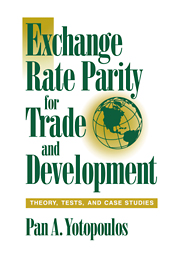The discussion in the previous chapters was predicated on the distinction between tradables and nontradables. Moreover, it postulated the existence of a systematic relationship between the level of development and the relative prices of tradables and nontradables. The analysis in effect implies that whereas the distinction may not matter greatly for DCs, not only is it valid for LDCs but, if ignored, it introduces a systematic element of resource misallocation in the economy. For LDCs in specific the signals emitted by border prices (of tradables) do not always correspond to the opportunity cost of resources of producing tradables in terms of nontradables.
The empirical question of tradability and the observed patterns in the price deviations between tradables and nontradables are especially important for our argument. The empirical evidence in Tables 5.1 and 5.2 related directly to the law of one price and only indirectly to tradability. The systematic deviations between the aggregate price indexes and the levels of development captured by the ICP are consonant with the predictions of the tradable–nontradable differential productivity model, as Chapter 5 indicated. Unless, however, tradables and nontradables are specifically identified, and their price movements analyzed, the link between the ICP price indexes and the Ricardo Principle is incomplete. The purpose of this chapter is to provide such a link.
The elements of tradability
As noted in Chapter 3, the foundation of Ricardo's distinction between tradables and nontradables lies in the specification of the production function, particularly with respect to factor proportions and technology. Agriculture, with traditionally high labor intensity, is the stylized Ricardian nontradable. Manufactures, on the other hand, which are capital- and technology-intensive, are tradables.
